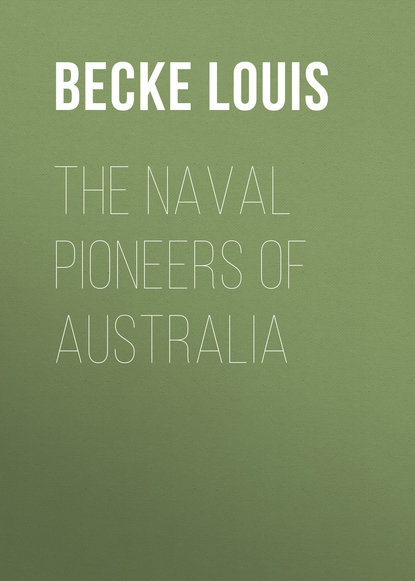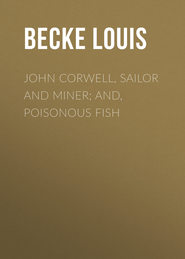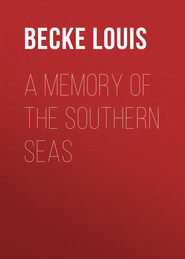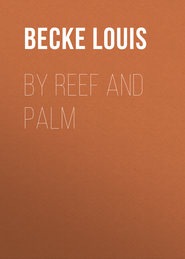По всем вопросам обращайтесь на: info@litportal.ru
(©) 2003-2024.
✖
The Naval Pioneers of Australia
Настройки чтения
Размер шрифта
Высота строк
Поля
"When they parted with Mr. Bass and his crew, who gave them what cloaths they could spare, some tears were shed on both sides. The whale-boat arrived in this port after an absence of twelve weeks, and Mr. Bass delivered to me his observations on this adventur'g expedition. I find he made several excursions into the interior of the country wherever he had an opportunity. It will be sufficient to say that he found in general a barren, unpromising country, with very few exceptions; and, were it even better, the want of harbours would render it less valuable.
"Whilst this whale-boat was absent I had occasion to send the colonial schooner to the southward to take on board the remaining property saved from the wreck of the ship Sydney Cove, and to take the crew from the island she had been cast upon. I sent in the schooner Lieutenant Flinders, of the Reliance (a young man well qualified), in order to give him an opportunity of making what observations he could amongst those islands; and the discoverys which was made there by him and Mr. Hamilton, the master of the wrecked ship, shall be annexed to those of Mr. Bass in one chart and forwarded to your Grace herewith, by which I presume it will appear that the land called Van Dieman's, and generally supposed to be the southern promontory of this country, is a group of islands separated from its southern coast by a strait, which it is probable may not be of narrow limits, but may perhaps be divided into two or more channels by the islands near that on which the ship Sydney Cove was wrecked."
The exploring cruise in a whale-boat had lasted from December 3rd, 1797, to February 25th, 1798, and we have before us a log kept by Bass of the voyage. Bass describes in detail all that Hunter tells in his despatch, but the intrepid explorer scarcely mentions the hardships and dangers with which he met. Incidentally he tells how the boat leaked, what heavy seas were often successfully encountered, and how "we collected and salted for food on our homeward voyage stormy petrels" and like luxuries.
Flinders meanwhile, as Hunter says in his despatch, had been sent in the colonial schooner Francis to bring back the castaways 1799 from the Sydney Cove, who remained anxiously waiting for succour on Preservation Island. On the way down the young lieutenant discovered and named many islands and headlands—the Kent group, the Furneaux group, and Green Cape are only a few names, to wit—and he came back fully convinced that the set of the tide west "indicated a deep inlet or passage through the Indian Ocean." He had no time on this trip to make surveys, but on his return to Sydney he found that George Bass had just come in in his whale-boat with his report. Hunter and the two young men agreed that the existence of the strait was certain, and that the next thing to do was to sail through it.
The colonial sloop Norfolk, built at Norfolk Island, a few months before, to carry despatches, was selected for the service. She was very small, only 25 tons burden. Flinders was given the command, and Bass was sent with him. The sloop was accompanied by a snow called the Nautilus, which was bound to the Furneaux group on a sealing expedition. The voyage lasted from October 7th, 1798, till January 12th, 1799, and in that period the explorers circumnavigated Van Diemen's Land, making so many discoveries and naming so many places, that a mere mention of them would fill a chapter. At the end of his log, Flinders tells us that on arrival at Port Jackson—
"to the strait which had now been the great object of research, and whose discovery was now completed, Governor Hunter, at my recommendation, gave the name of Bass' Straits. This was no more than a just tribute to my worthy friend and companion for the extensive dangers and fatigues he had undergone in first entering it in the whale-boat, and to the correct judgment he had formed from various indications of the existence of a wide opening between Van Dieman's Land and New South Wales."
Six months later the Norfolk, with Flinders on board, sailed along the north coast, making many discoveries, but missing the important rivers. Then he returned to England in the Reliance. His tried comrade and friend, Bass, had already left the colony when the Norfolk entered Sydney Heads, and his after-adventures and still mysterious fate, so far as can be conjectured, are told in what follows.
A company was floated in England to carry stores to Port Jackson on the outward trip, and load for return at the islands in the Pacific or such ports as could be entered on the South American coast. A ship called the Venus was purchased for the purpose, and Bass and his father-in-law (he had just married) and their relations held the principal shares in her. The ship was under the command of one Charles Bishop; but Bass sailed in her as managing owner and supercargo.
The Venus arrived safely at Sydney, and Bass made a contract with the authorities to bring a cargo of pork from Tahiti. On his return from this voyage another contract was concluded between him and Governor King to continue in this trade. Meanwhile Bishop, the master of the vessel, had fallen ill, and Bass took command; and the following letter, dated Sydney, February 3rd, 1803, and written to Captain Waterhouse, his brother-in-law, in England, was the last news his friends ever heard from Bass:—
"I have written to you thrice since my arrival from the South Sea Islands. In a few hours I shall sail again on another pork voyage, but it combines circumstances of a different nature also.
"From this place I go to New Zealand to pick up something more from the wreck of the old Endeavour in Dusky Bay, then visit some of the islands lying south of it in search of seals and fish. The former, should they be found, are intended to furnish a cargo to England immediately on my return from this trip; the fish are to answer a proposal I have made to Government to establish a fishery, on condition of receiving an exclusive privilege of the south part of New Zealand and of its neighbouring isles, which privilege is at once to be granted to me. The fishery is not to be set in motion till my return to old England, when I mean to seize upon my dear Bess, bring her out here, and make a poissarde of her, where she cannot fail to find plenty of use for her tongue.
"We have, I assure you, great plans in our heads; but, like the basket of eggs, all depends upon the success of the voyage I am now upon.
"In the course of it I intend to visit the coast of Chili in search of provisions for the use of His Brit. Majesty's colony; and, that they may not in that part of the world mistake me for a contrabandist, I go provided with a very diplomatic-looking certificate from the governor here, stating the service upon which I am employed, requesting aid and protection in obtaining the food wanted. And God grant you may fully succeed, says your warm heart, in so benevolent an object; and thus also say I. Amen, say many others of my friends.... Speak not of So. America, where you may hear I am digging gold, to anyone out of your family, for there is treason in the very name.... Pleasing prospects surround us, which time must give into our hands. There are apparent openings for good doings, none of which are likely to be tried for till after my return and dissolution of partnership with Bishop, a point fully fixed upon. With kind love to Mrs. W. and all your family, I am, even at this distance and at this length of time, and under all my sad labours, as much as when I saw you."
At this time Bass was a young man of thirty-four, 1817 "six feet high, dark complexion, wears spectacles, very penetrating countenance," says his father-in-law. Nothing more was heard of the Venus or her crew until there arose a rumour that the ship had been taken by the Spaniards on the coast of Peru. A Captain Campbell, master of the Harrington, is alleged to have made the statement that a Spanish gentleman told him that Bass had been seized when landing from his boat and carried to the mines, and that the ship was afterwards taken and the crew sent to share the fate of their chief. The cause of this seizure was, says one unauthenticated account, because Bass requested permission to trade, was refused, and then threatened to bombard the town.
Lieutenant Fitzmaurice was at Valparaiso in 1803, and he states that all British prisoners in Chili and Peru had been released, and that he had heard of Mr. Bass being in Lima five or six years before. A letter in the Record Office, London, dated Liverpool, New South Wales, December 15th, 1817, says:—
"I have just heard a report that Mr. Bass is alive yet in South America. A capt'n of a vessel belonging to this port, trading among the islands to the east, fell in with a whaler, and the capt'n informed him he had seen such a person, and described the person of Mr. Bass. The capt'n, knowing Mr. Bass well, is of a belief that, [from] the description that the master of the whaler gives of him, it's certainly Mr. Bass, being a doctor, too, which is still a stronger reason. I am, etc., THOS. MOORE."
And so in this sad fashion, his fate a mystery, perhaps the victim of savages on some lonely Pacific island, perhaps dragging his life out a broken-hearted prisoner in the mines of Peru, the gallant young explorer passes out of history.
When Flinders returned to England he found an enthusiastic admirer and a powerful friend in Sir Joseph Banks. The young lieutenant was getting ready for publication a small book describing the circumnavigation of Van Diemen's Land, and while he was doing this Banks induced the Admiralty to prepare H.M.S. Investigator for surveying service in Australian waters and give Flinders charge of her, with the rank of commander. Banks had everything to do with the arrangements for the expedition; and how much was thought of his capacity for this work is shown by a memo from the Secretary to the Admiralty in reply to a request 1800 from the naturalist:—
"Any proposal you may make will be approved; the whole is left entirely to your decision."
The Investigator, formerly the Xenophon, was a sloop of war, and was fitted out in a most elaborate fashion for the cruise, carrying with her an artist (Westall), a botanist (Brown), an astronomer (Crossley), and several other scientists.
Among her officers were Samuel Flinders, second lieutenant and brother of Matthew, and a midshipman named John Franklin, afterwards Sir John Franklin, the Arctic explorer and at one time governor of Tasmania. Her total complement numbered 83 hands. The Lady Nelson, a colonial government brig, was ordered, on the arrival of the Investigator at Port Jackson, to join the expedition and act as tender to the larger vessel, and her history is scarcely less remarkable than that of the little vessel Norfolk, Flinders' old command, which by this time had been run away with by convicts, and "piled up" on a beach near Newcastle, New South Wales.
The Investigator sailed, and Flinders made Cape Leeuwin on September 7th, 1801. He ran along the south and east coasts, met the Baudin expedition in Encounter Bay, and entered Port Phillip on April 26th, 1802, and found that the Lady Nelson had preceded him in the February before. Arriving in Sydney in May, he sailed again a couple of months later to the northward, surveying the Great Barrier Reef, Torres Straits, the Gulf of Carpentaria, and the coast of Arnhem's Land. By this time the ship was too unseaworthy to prosecute further work, so Flinders sailed round the entire continent by way of the Leeuwin, and finally arrived in Sydney harbour again in June, 1803.
In these voyages he performed exploring work that is now a part of English history, and his charts of the Australian coasts were the foundation of all others that have since been made. He either first used the name of Australia or adapted it to the great continent, and New Holland, after the publication of his charts, began to be a name of the past.
Most of the remainder of this story can best be told in the words of Flinders and from the narratives of his officers.
The long and rough voyage of the Investigator had shaken her poor old carcase terribly, as the following summary of 1805 an examination by the captains of the men-of-war then in Sydney Harbour and others will show:—
"On the port side out of ninety-eight timbers, eleven were sound, and sixty-three were uncertain if strained a little; on the starboard five out of eighty-nine timbers were good, fifty-six were uncertain, and twenty-eight rotten; the planking about the bows and amidships was so soft that a stick could be poked through it."
Considering all these defects it was not worth while to keep her, so she was converted into a hulk in Sydney Harbour. But later on it was found that by cutting her down it might be possible to navigate her to England. This was done, and the old ship sailed from Sydney on May 24th, 1805, under the command of Captain Kent, who managed with the greatest difficulty to reach Liverpool on the 14th of October following. In his despatch announcing her arrival he says:—
"A more deplorable, crazy vessel than the Investigator is, perhaps, not to be seen. Her maintopmast is reefed a third down; we have been long without topgallantmasts, being necessitated to take the topgallant rigging for running gear."
And Governor King, anxious to do Flinders justice, says:—"I hope no carping cur will cast any reflection on him respecting the Investigator … should it be so it will be an act of great injustice," and then he alludes to the thoroughly rotten condition of the ship. He was quick, too, to recognize the immense value of the work accomplished by Flinders, and made him every offer of help that lay within his power to continue the survey.
There were not more than half a dozen vessels in the colony, but Flinders could have any one of them he liked, but they were all too small and unfit for such a severe service. At last it was decided that he should return home as a passenger in the Porpoise; some of his fellow-workers on the Investigator accompanied him, others went to the East Indies, and one or two stayed behind. It was with a feeling of intense satisfaction that Flinders took possession of his comfortable cabin on the Porpoise, for he was looking forward to an agreeable rest after the hardships he had undergone. The quarter-deck was taken up by a greenhouse protecting the plants collected on the Investigator's voyage, and designed for the King's garden at Kew.
Early in August, accompanied by two returning transports, the Cato and Bridgewater, the Porpoise, under Lieutenant Fowler, sailed out of Sydney Harbour, and steered a northerly course along the coast, closely followed by the other two ships. With Flinders on board to consult, Fowler had no fear of the dangers of the Barrier Reef, and with a lusty south-east breeze, and a sky of cloudless blue, the three ships pressed steadily northward. Four days later they arrived at a spot about 730 miles north of Sydney, just abreast of what is now Port Bowen, on the Queensland coast.
It was the second dog-watch, the evening was clear, and the three ships were slipping slowly over the undulating Pacific swell. Flinders was below chatting to his friends about old times, and the officers were having a quiet smoke, when a cry of "Breakers ahead!" from both the quarterdeck and forecastle rang out in the quiet night. The helm was put down, but the vessel had not enough way on, and scarce brought up to the wind. Flinders, for the moment thinking he was on board the old Investigator again, turned to the officer near him and said with a quiet smile: "At her old tricks again; she wants as much tiller rope as a young wife."
A few minutes later he rose and went on deck to look around. The cry of "Breakers ahead!" had nothing alarming in it to him, so he had not hurried; but one quick glance showed him that the ship was doomed, for the breakers were not a quarter of a cable's-length away, and the inset of the swell was rapidly hurrying the ship to destruction. Two minutes later a mountain sea lifted the Porpoise high, and took her among the roaring surf. In another moment she struck the coral reef with a thud that shook her timbers from keel to bulwarks; then the ship fell over on her beam ends in the savage turmoil, her deck facing inshore. So sudden was the catastrophe that no one could fire a gun for help or for warning to the other ships, which were following closely. As the ship rolled over on her beam ends, huge, thundering seas leapt upon and smothered her, and the darkness of the night was accentuated by the white foam and spume of the leaping surf. In a few moments the foremast went, the bottom was stove in, and all hope was abandoned; and then during a momentary lull in the crashing breakers they saw the Cato and Bridgewater running directly down upon the Porpoise. For some seconds a breathless, horror-struck silence reigned; then a shout arose as the two transports shaved by the stricken ship and were apparently saved.
But their rejoicing was premature, for a minute or two later the Cato struck upon an outlying spur of the reef, not a cable-length away. Like the Porpoise, she at once fell over on her side, but with her deck facing the sweeping rollers, and each succeeding wave spun her round and round like a top and swept her fore and aft. The Bridgewater escaped, and a light air enabled her to stand to the north out of danger.
Flinders at once took command on the Porpoise, a small gig was lowered to leeward, and with half a dozen men, two odd, short oars, and shoes and hats for balers, he set out to struggle through the breakers to a calm ring of water beyond, where they might find a sandbank to land upon, or get within hailing distance of the Bridgewater. Meanwhile Fowler was thinking of lightening the Porpoise and letting her drive further up on the reef; but fear was expressed that she might be carried over its inside edge, and founder in 17 fathoms of water. The two cutters were launched, and stood by under the lee of the ship throughout the long, weary night in case she broke up. At intervals of half an hour, blue lights flared over the dismal scene, and lit up the strained, white faces of those watching for the lights of the ship that was safe, and which, either not seeing or not heeding their distress, had disappeared from view.
During the night the wind blew high and chill, the sea increased in fury, and the ship groaned and shuddered at each fresh onslaught. Fowler, however, was hard at work constructing a raft, ready for launching at dawn, and his men, exhausted as they were, bore themselves as do most British seamen in the hour of death and danger.
Flinders meanwhile had succeeded in reaching the lagoon within the reef, and he and his men jumped out of the boat, and walked to and fro in the shallow water to keep themselves warm and out of the wind; but they sought in vain to discern the lights of the Bridgewater. But the Bridgewater had sailed on to meet another fate. She reached India safely, then left again for England, and was never afterwards heard of. It is difficult to understand how her people could have avoided seeing the others' distress; it is harder still to believe that, seeing their plight, the Bridgewater's company could have thus deserted the castaways. Of course, this explanation would have been demanded, but the Bridgewater was an "overdue" ship long before the news of the disaster arrived in England.
As the sun rose, the scene looked less hopeless, and the men found that they were near a small sandbank, on which were a quantity of seabirds' eggs. Close by were the Porpoise and Cato still holding together on the reef. Returning to the former ship, Flinders at once sent a boat to rescue the exhausted crew of the Cato, who flung themselves into the waves, and were picked up safely.
Then all hands from both wrecks—marvellous to say, only three men were lost during the night—set to work under his directions, and collected all the food and clothing they could possibly obtain. With the warmth of the sun their spirits returned, and the brave fellows took matters merrily enough, many of them decking themselves out in the officers' uniforms, for their own clothing could not be reached. A landing was soon effected, and a topsail yard was set up as a flagstaff, with the blue ensign upside down, though but little hope was entertained of passing vessels in such a place. In all there were 94 people under Flinders' care, and they made themselves comfortable in sailcloth tents on the barren sand spit. Enough food had been saved from the Porpoise to last for three months; but to Flinders' grief many of the papers, charts, and pictures dealing with his explorations were sadly damaged. Among the articles saved was a picture of Government House, Sydney, in 1802, and this and some others are now in the possession of the Royal Colonial Institute, London.
The bank upon which the castaways lived was only 150 fathoms long by 50 broad, and about 3 feet above water. Whilst looking for firewood some of Flinders' men found an old stern-post of a ship of about 400 tons, which he imagined might have belonged to one of the ships of the La Pérouse expedition.
Wearily enough the time passed, and then Flinders determined to attempt to reach Sydney in one of the ship's boats. He chose a six-oared cutter, and raised her sides with such odd timber as he could find. She was christened The Hope, and on the 26th August he with the commander of the Cato, 12 seamen, and three weeks' provisions, bade farewell to their comrades, and with a cheer, set out with bold hearts upon their voyage.
The Hope reached Sydney safely on the 8th September, and Flinders and his companions went straight to Government House, where King was having dinner. The Governor leapt from his chair with astonishment, almost taking them for spectres, so half starved and distressing was their appearance.
"But," says Flinders, "as soon as he was convinced of the truth of the vision, and learned the melancholy cause, a tear started from the eye of friendship and compassion, and we were received in the most affectionate manner."
Alas for poor Flinders! There were yet in store for him worse miseries, and tears of sorrow from those nearer and dearer to him were yet to flow in abundance in the many weary years of waiting yet to come.
CHAPTER IX.
THE CAPTIVITY OF FLINDERS
In Governor King, Flinders had a firm friend, and one who sympathized deeply with his misfortune, as was soon evinced. But the first thing to be done was to rescue the castaways on Wreck Reef, as Flinders had named the scene of the disaster, and the master of the ship Rolla, bound to China, was engaged by King to call at the reef with provisions and convey to Canton all those of the ships' companies who preferred going to that port; and the Francis, a schooner of 40 tons, sent in frame from England in 1792, was to accompany the Rolla and bring back those of the shipwrecked men who chose to return to Port Jackson.
But for Flinders himself King did more: he offered him the use of a small vessel to sail to England to convey home the charts and journals of the Investigator voyage. The vessel was named the Cumberland; she was only 29 tons, and had been built in Sydney, but Flinders was satisfied that she was capable of performing the voyage; and both he and King, being men of action, decided that she should sail, in company with the Francis and Rolla, to the scene of the wreck, where Flinders was to select officers and men to man her for the voyage to England, a temporary crew being given him for the run down to the reef. King told Flinders to choose his own route for the voyage home, to sell the little vessel at the Cape or elsewhere if he thought fit, and engage another to continue the voyage, and, in fact, gave his friend a free hand.
The Australian press of the day consisted of the Sydney Gazette, then in its first year of existence, and sometimes printed on odd scraps of wrapping paper by reason of the shortness of other material, and this paper, speaking of the Cumberland, says, "She is a very good sea-boat, and in every way capable of carrying enough water and provisions for Captain Flinders and the officers and nine men who are appointed to navigate the first vessel built in the colony to England."
Nevertheless there were many naval men who thought the venture dangerous in the extreme, and sought to dissuade Flinders from undertaking it. But his was no timorous nature—"a small craft, 'tis true," he said laughingly, "but mine own."











